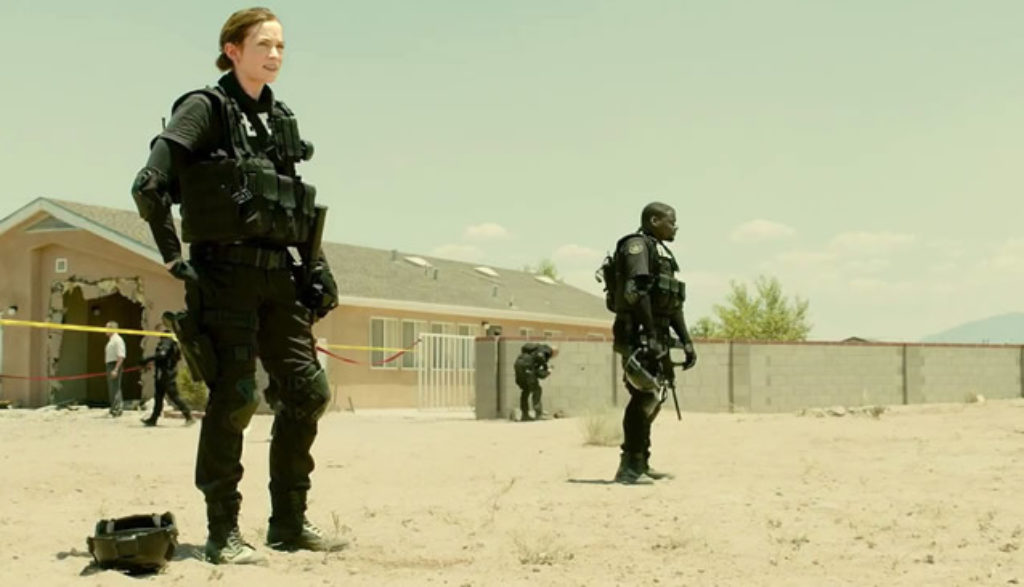
Kate knows all about nightmares. She’s helped put a stop to several. She’s an FBI agent, and she and her partner, Reggie, specialize in recovering kidnap victims. They’ve likely seen plenty of things not fit for print.
But her experience couldn’t prepare her for what she sees in Chandler, Ariz. She and her team crash through a wall, expecting to find a handful of innocents held by a handful of the guilty. What they find instead makes national news: dozens of bodies behind the drywall, their heads bagged in plastic. And when someone discovers a padlocked trapdoor in a shed out back, the building blows up—killing two of her men.
It was the work of a powerful drug cartel, clearly—only this house of horrors wasn’t in Juarez or Tijuana, but a comfortable suburb of Phoenix. The drug war is moving north of the border.
Kate’s pulled into a high-level meeting and asked whether she’d like to pursue this case a little further as part of a special task force. She says yes, and she’s quickly spirited away on a private jet to “the El Paso area.” Two other people share the plane with her: Matt, a sandal-wearing sort who says he’s an advisor to the Department of Defense; and Alejandro, who’s sleeping in a seat across the aisle. Matt says he’s another DoD guy, but he’s not American. He’s Colombian. And Colombia is a place where drugs are a $10 billion industry. What does he do there? Alejandro’s not saying, and no one else is telling. When Kate asks him how cartels work, all he says is, “It’s like asking me how a watch works. For now, let’s just keep an eye on the time.”
Time is indeed important. Kate learns that their trip to “the El Paso area” is, in fact, a jaunt into Juarez, Mexico, where Matt and Alejandro plan to pick up a high-level cartel member and forcibly export him back across the border for, ahem, questioning. The whole trip is legally iffy, of course, but it’s not until several people are killed at the border—all cartel thugs—that Kate begins to ask herself just who these hombres are and how far they’re willing to go.
Matt doesn’t deny that he and his team stretch the law to get to their good end. They’re disruptors, he says, jarring cartels from their sense of business security. The more disruptions, the more mistakes a kingpin might make. And that’s who they’re after—Fausto, the top drug dog. If Fausto goes down, the cartel will too.
“To find him would be like discovering a vaccine,” Matt says.
But what’s the cost for this cure? What laws will be buried? How many people will be killed? For idealistic and usually ethical Kate, will the price be too high? She could walk away. But she knows she won’t.
Kate and, eventually, her partner, Reggie, sign on with Matt to try to do some good in the world. They’ve seen firsthand the death and destruction meted out by Fausto’s cartel. They’ve seen how drugs have turned Juarez into a war zone, and how some of that violence has crept across the border. But Kate also believes in the rule of law. And as her cohorts upend or simply ignore the rules put in place to keep society safe and ordered (and to keep the guardians of that society within their bounds), she has a problem with it—and eventually shows that she’s not just willing to go along.
Sicario, in a twisted way, also acknowledges the power of family—even among really bad sorts. Alejandro knows that most of the cartel thugs he interrogates have children, and he uses their love for them as a pressure point to get the information he wants. “What you do now, you do for your family,” he tells one of them, knowing they’ll do anything to keep their wives, sons and daughters safe. (I told you it was twisted.)
A cross hangs on the wall of a Mexican police officer’s house, and his wife crosses herself as she sits down to eat.
Kate walks through her house with her shirt off, revealing her bra as Reggie sits and watches. Reggie jokingly suggests she should invest in new underwear; Kate tells him that no one but him has seen her in it for a really long time.
When the two go out to a bar one night, Reggie peppers Kate with advice on how she might get a date (and makes a crude joke about incest). We see her dance sensually with one of Reggie’s friends, Ted. Then they kiss and go back to Kate’s apartment, where they’re about to have sex.
The evening turns violent when Kate discovers that her paramour is in the employ of the cartel. They struggle and fight, and Ted nearly strangles Kate before a timely visitor interrupts.
That’s far from the most violent moment in Sicario. The story, dependent in part on the truly horrific real-life stratagems of drug cartels, pulls no punches. The 42 bodies Kate discovers in the walls are bloody and disturbing—their very humanity obscured by the red-and-brown-stained bags over their heads. In the aftermath of the explosion, we see a horribly hurt man crawl away from the wreckage … and a stray arm laying in the dirt.
Naked and dismembered bodies hang from bridges. (We see them in graphic detail when Kate finds them and also in the pictures she takes.) Fresher corpses often leave bloody splashes on walls or cars. Blood pools under some of the newly dead. A man bleeds out after his throat is cut. Dozens of people are shot, many of them killed, including a husband and wife and their two young sons. Others are manhandled and beaten. A woman is wrestled to the ground. We hear about a beheading and death by way of acid.
Alejandro tortures people to get information. (We see some of his bloody tactics.) He threatens to have men rape children.
More than 50 f-words and about 10 s-words. Also: “a–,” “b–ch,” “d–n” and “pr–k.” God’s name is misused a handful of times, Jesus’ at least a half-dozen.
Drugs are at the center of the cartel’s power, of course, and we see dozens of bricks of cocaine. Kate and Reggie drink beer at a bar. There’s wine at a dinner table. There’s talk about barely getting sober before work begins. A policeman pours whiskey into his coffee. Kate smokes cigarettes (as do others), and we hear her wistfully longing for a smoke.
After finding the bodies in the walls, Kate and others retch and vomit outside the house.
Sicario’s horrors are rooted in grim fact.
Mexico’s real-life drug lords torture and mutilate victims as a matter of course and buy policemen like pieces of penny taffy. In 2010, some 3,000 citizens were murdered in Juarez, where much of Sicario takes place. That’s more than eight people per day. (In San Antonio—a city about the same size as Juarez—79 murders were reported that same year.)
Maybe we can understand why Matt and Alejandro believe extra-special, extra-legal measures are necessary to battle this evil.
“You’re not a wolf,” Alejandro tells Kate, “and this is a land of wolves now.”
But it’s through Kate’s eyes that we see the growing extremes her comrade will go to in tracking and taking down those wolves. We see the horrors that the “good” guys perpetrate right alongside the terror that’s rained down by the bad. And so Sicario asks us questions of morality: How far is too far? To fight such monstrous evil, is it necessary to become evil ourselves? Alejandro has one answer. Kate leans toward another. And moviegoers may find themselves taking sides.
But I will leave you with one more question: When we rightly look away in horror as the vicious acts of real-life cartels are splashed across the news, does it make sense to pay to be entertained by such insanity perpetrated by fictional cartels as their dirty deeds are splashed across movie screens?


Paul Asay has been part of the Plugged In staff since 2007, watching and reviewing roughly 15 quintillion movies and television shows. He’s written for a number of other publications, too, including Time, The Washington Post and Christianity Today. The author of several books, Paul loves to find spirituality in unexpected places, including popular entertainment, and he loves all things superhero. His vices include James Bond films, Mountain Dew and terrible B-grade movies. He’s married, has two children and a neurotic dog, runs marathons on occasion and hopes to someday own his own tuxedo. Feel free to follow him on Twitter @AsayPaul.